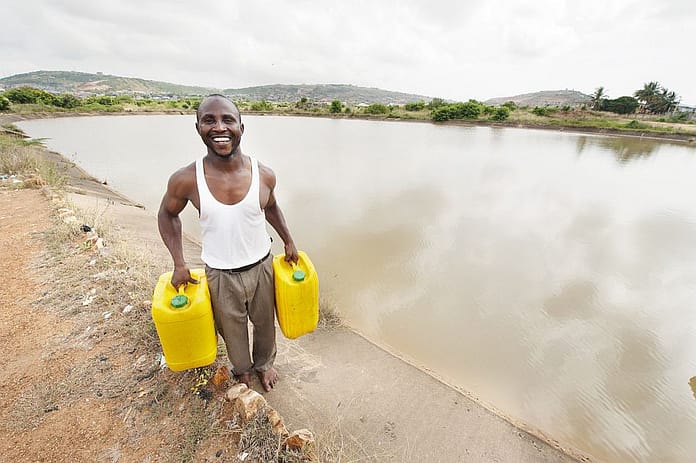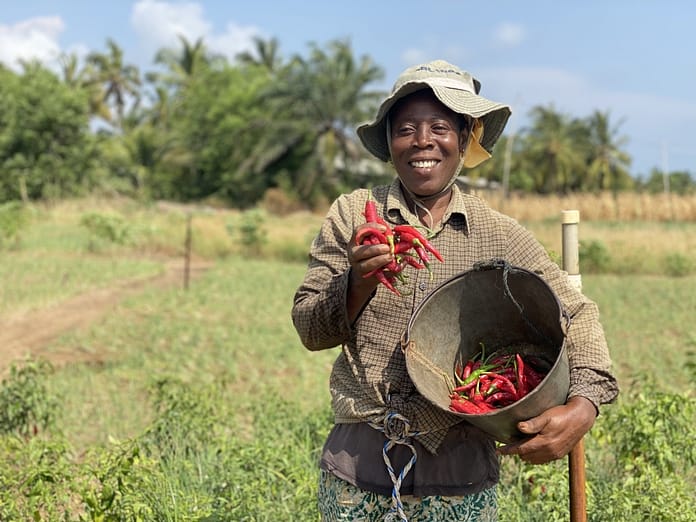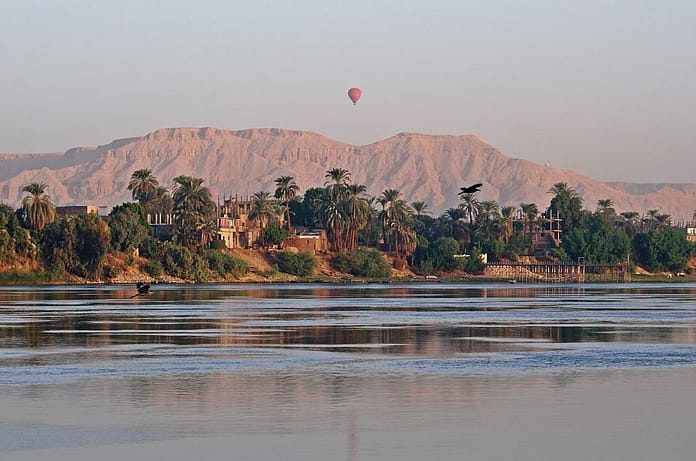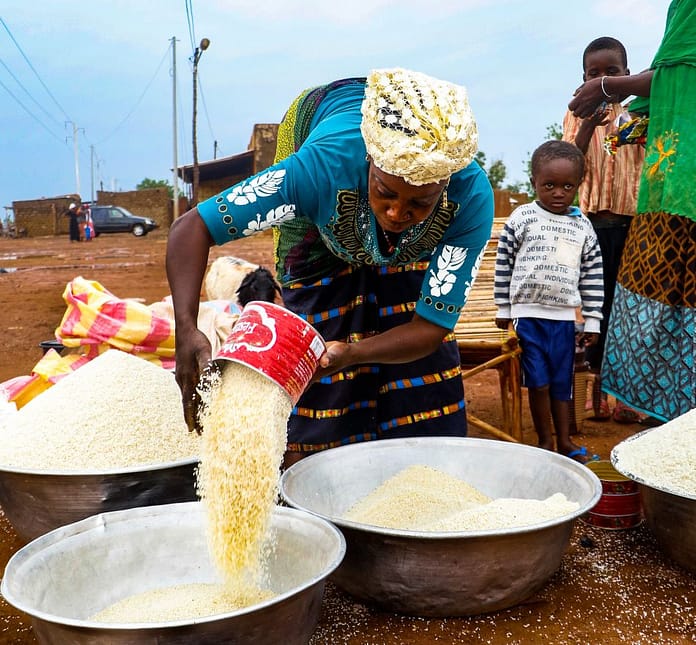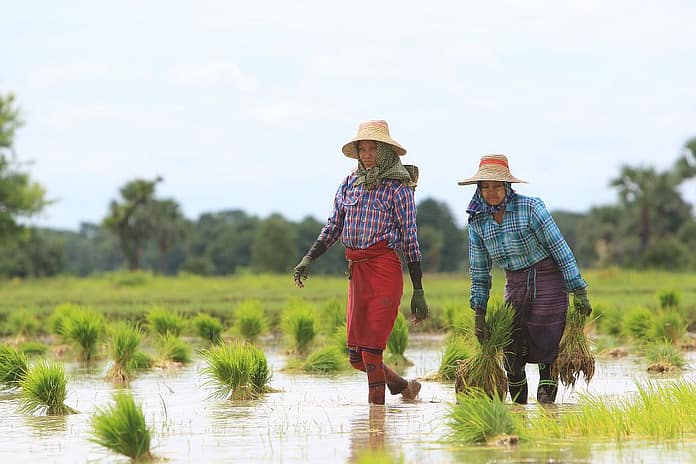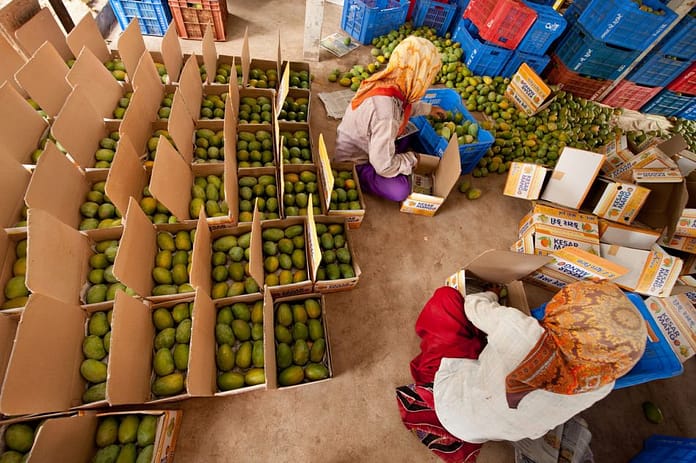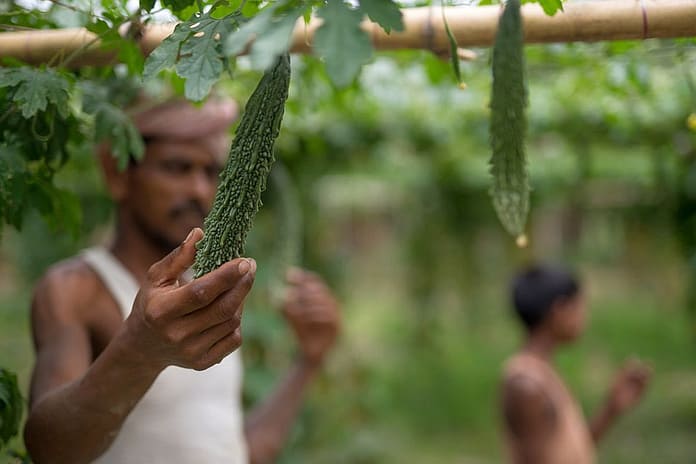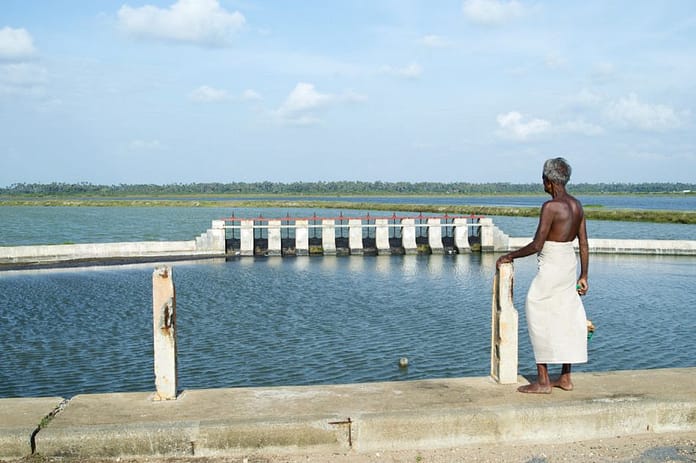IWMI contributions to research from September to November 2022
By Victoria Blymier, Princeton in Asia Fellow, IWMI
At this November’s COP27 conference hosted in Sharm el-Sheikh, Egypt, it was clear that leaders across the policymaking and scientific community affirmed these principles with unity: water solutions are climate solutions; we must put water at the heart of climate action to transition to a water-secure world. IWMI’s work reflects COP27’s key insights. Our research implements water solutions and scales them to solve global challenges. Continue reading this selection of publications from September, October, and November to see how IWMI researchers are advancing water solutions for climate change and its intersection with irrigation science and food systems.

The “water machine” of Bengal: a data-driven and policy-supported strategic use of aquifers for irrigation is needed to maximize their benefits
Intense summer irrigation from shallow wells lowers groundwater tables and allows monsoon rain to recharge aquifers, a process researchers coin the “Bengal Water Machine (BWM).” In her perspective article published by Science vol. 377, IWMI’s Aditi Mukherji illustrates the history and science behind BWM and describes how it can inform guidelines for groundwater use. Mukherji points to a quantitative analysis which demonstrates how large-scale recharge has been powering Bengal’s “water machine.” While the future of climate change impacts on BWM may be uncertain, this article establishes that induced recharge systems increase water storage, thereby improving food security and flood mitigation. Mukherji suggests that these advantages could be replicated in Ganga basins with parallel geographies and weather patterns.
Read more here.
Climate change: put water at the heart of solutions
Growing up near the Sundarbans mangrove forests in West Bengal, IWMI Principal Researcher Aditi Mukherji learned firsthand the disproportionate impacts climate change has on farmers in developing countries: variable precipitation, intense floods and droughts, altered soil moisture, and rising sea levels strike communities that contribute the least to global greenhouse gas emissions. In her personal take published in Nature Vol. 605, Mukherji highlights the critical intersection between climate and water, and urges readers to consider matters of equity and justice when developing climate solutions. She warns that if water demands are overlooked, mitigation programs can cause further food and water insecurity. Present circumstances are frustrating existing coping mechanisms which threaten farmers’ livelihoods and even their safety. As a solution, Mukherji recommends including marginalized voices while devising context-specific mitigation and adaptations solutions. Additionally, we must direct global support to locally led adaptation initiatives. This will be essential to achieving the diverse and all-encompassing solutions necessary to tackle climate change.
Read more here.
Elevating the role of water resilience in food system dialogues
We need more water to grow enough food to provide sustainable, healthy diets for all people within resilient food systems. To accomplish this goal in the face of finite water resources pulled between competing demands and stressed by climate change, the authors, including IWMI Director General Mark Smith, propose that we must first establish good governance for effective decision-making to follow. Their article featured in Water Security vol. 17 defines six attributes of good governance with corresponding recommended actions. The six attributes are as follows: treat the food system as a system; adopt multi-level inclusive governance and participation; enable continual innovation, new knowledge, learning, and dissemination; incorporate diversity and redundancy; ensure system preparedness; and plan for the long term.
Read more here.
Knowledge networks to support youth engagement in sustainable food systems
As global environmental challenges rise, youth are stepping up to be agents of change who are activating knowledge to strengthen food systems. IWMI Research Officer Indika Arulingam contributed to this study published in Frontiers that examines how young people are becoming agents of change within such food systems networks. Through a review of global interdisciplinary food system literature and case studies, researchers conclude that youth create and distribute food systems knowledge through formal institutions and grassroots networks; to increase their engagement in this role, it is important to recognize them as important actors and value the traditional, ecological, and local knowledge (TELCK) they reproduce. Furthermore, to democratize these networks, we must increase access to formal and grassroots knowledge. Governments can facilitate this by promoting experiential learning, agroecology innovations, and education programs for youth. The authors leave readers with policy recommendations aimed at expanding youth participation in food system transformation.
Read more here.
Relatives, neighbors, or friends: Information exchanges among irrigators on new on-farm water management tools
Furrow irrigation methods pose economic and environmental problems, but on-farm management technology, such as wetting front detectors and chameleon sensors, can improve water efficiency. In this study published by Agricultural Systems, IWMI’s Karthikeyan Matheswaran, Petra Schmitter and co-researchers investigate how social ties––being neighbors, friends, or spatially proximate–– impact the exchange of information from farmers with access to management technology to those without it. They specifically examine how Ethiopian farmers learn the duration of time they should irrigate according to data gathered from farmers with wetting front detectors and chameleon sensors. By conducting household surveys and piecing together network modules, researchers used a fixed econometrics approach to determine how different social ties affect information flow among technology-recipients in the Koga irrigation scheme and other farmers in the quaternary canal. The findings show that it was not family or neighbors who played a significant role in spreading information––but those engaged in purposeful friendships and who worked on adjacent farm plots or passed by them frequently. This study demonstrates that new technology can be scaled faster by spreading information and distributing the tools through friends and spatial proximates.
Read more here.
Modelling neglected and underutilized crops: a systematic review of progress, challenges, and opportunities
Neglected and underutilized crops (NUS) can build resilient agricultural systems, but current food policy leaves out NUS as part of its strategy. IWMI’s Tafadzwanashe Mabhaudhi and coauthors, aware of the opportunity crop models present to gather evidence for filling the data gap, set out to assess the progress, challenges, and opportunities for modelling NUS. After conducting a systematic review, their study issued in Sustainability vol. 14 discovers few models exist that evaluate the “growth, yield, and resource use efficiencies of NUS.” The sparse pool of NUS research is exacerbated by a lack of reliable ecophysiological data upon which to quantify and measure crop models. However, big data and machine learning may prove to be effective tools for making progress on crop model databases and knowledge.
Read more here.




